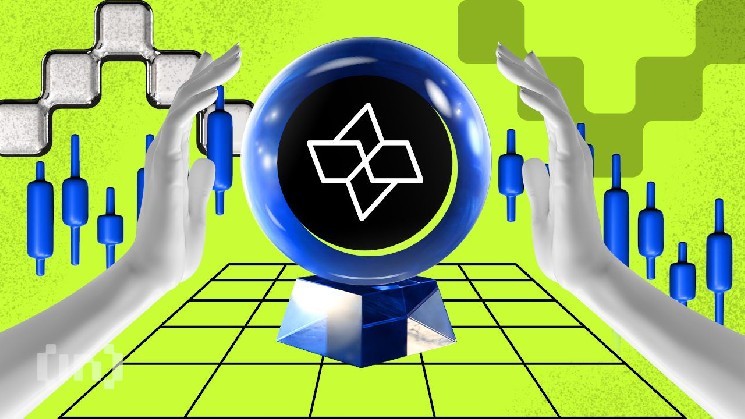Blockchain Innovation: Who Is in the Lead?

The blockchain development landscape teems with diverse platforms vying to carve out a niche in a rapidly evolving sector. This article explores the world of Cartesi, a player that aims to bridge the gap between traditional and decentralized development.
We will compare Cartesi to other prominent blockchain platforms, shedding light on their respective strengths, weaknesses, and opportunities.
Cartesi: Simplifying Blockchain for Mainstream Developers
Cartesi’s aim is to streamline decentralized application (dApp) development by enabling compatibility with traditional programming languages and software tools. By lowering the barrier to entry, Cartesi attracts developers from various backgrounds, fostering a talent ecosystem. Its off-chain computation capabilities also ease the processing burden on the main blockchain, improving scalability.
Cartesi and Linux
Cartesi leverages the power of the Linux operating system to build a versatile and accessible platform for decentralized applications (dApps). By doing so, it allows developers to use mainstream programming languages like Python, JavaScript, and many others in their dApps.
This compatibility with traditional languages and software tools enables Cartesi to attract developers with diverse backgrounds and experience, facilitating a more inclusive and robust ecosystem.
However, Cartesi’s reliance on well-established programming languages may limit its potential to introduce innovative, blockchain-specific features. Balancing accessibility and cutting-edge functionality remains a challenge for this platform. Additionally, Cartesi is still a relatively new player, which may make some developers hesitate to adopt it over more established platforms.
Ethereum: The Pioneer with Growing Pains
Ethereum, the frontrunner in smart contract platforms, boasts a vast developer community and a rich array of dApps. Its native programming language, Solidity, has become a standard for smart contract development. Ethereum also supports the ERC-20 and ERC-721 token standards, making it easier for projects to develop and manage their cryptocurrencies and non-fungible tokens (NFTs).
Conversely, Ethereum’s popularity has exposed scalability issues, leading to network congestion and high transaction fees. The platform’s transition to Ethereum 2.0 aims to address these concerns by implementing sharding and Proof-of-Stake consensus, but the outcome remains uncertain. Additionally, Ethereum’s reliance on Solidity can make it tough for developers without blockchain experience to get started.
Binance Smart Chain: Speed and Affordability at a Cost
Binance Smart Chain (BSC) offers a more scalable and affordable alternative to Ethereum, with faster transaction times and lower fees. BSC is compatible with Ethereum’s tools and languages, making it an attractive option for developers seeking a cost-effective solution. The platform also benefits from the support of the Binance ecosystem, which provides access to a vast user base and liquidity pools.
Nonetheless, BSC’s centralization under the Binance umbrella raises concerns about the network’s security and true decentralization. This trade-off between efficiency and control may deter some blockchain purists. Moreover, BSC has been criticized for facilitating copycat projects and scams, which may undermine its credibility.

A Network of Interconnected Blockchains
Polkadot, a highly scalable and interoperable platform, facilitates seamless communication between multiple blockchains. By enabling cross-chain functionality, Polkadot unlocks new possibilities for dApp development and collaboration. Polkadot’s Substrate framework makes it easy for developers to create and deploy custom blockchains (parachains) that leverage the network’s shared security and interoperability.
While Polkadot’s interoperability is a significant strength, its intricate architecture poses a steeper learning curve for developers. Understanding Polkadot’s unique approach to consensus, parachains, and cross-chain messaging may require a deeper dive into blockchain concepts. Furthermore, Polkadot’s relatively young ecosystem may not yet offer the same depth of resources and community support as more established platforms.
Cosmos: The Internet of Blockchains
Cosmos, another platform focused on blockchain interoperability, empowers developers to make sovereign blockchains that can communicate with one another. Its modular architecture allows for flexibility and customization, enabling developers to tailor solutions to specific use cases. Cosmos uses the Tendermint consensus algorithm, which combines high performance with Byzantine fault tolerance.
However, Cosmos’ focus on enabling sovereign blockchains may limit the platform’s ability to provide a cohesive ecosystem for dApps. Additionally, developers must navigate the complexities of Cosmos’ architecture, potentially hindering wide adoption. Cosmos also lacks a unified token standard, making it more difficult for projects to create and manage their cryptocurrencies.
High-Speed and Scalability in Focus
Solana is a high-performance blockchain platform that emphasizes speed and scalability. Boasting over 50,000 transactions per second (tps), Solana provides an efficient solution for resource-intensive applications. Its unique consensus mechanism, Proof of History, enables the network to maintain high throughput without compromising security or decentralization.
Despite its impressive performance, Solana’s multiple network outages have raised questions about its long-term stability. Additionally, the platform’s smaller developer community may limit the availability of resources and support.
Solana’s native programming language, Rust, although powerful and versatile, may present a challenge for developers accustomed to more popular languages like JavaScript or Python. That being said, Rust continues to gain in popularity.
Cartesi’s Position
Cartesi’s primary selling point is its compatibility with mainstream programming languages, making it an accessible option for developers with traditional backgrounds. However, it faces stiff competition from established platforms like Ethereum and emerging alternatives such as Binance Smart Chain, Polkadot, Cosmos, and Solana.
Each platform offers strengths and weaknesses, with trade-offs between scalability, interoperability, accessibility, and decentralization. Cartesi’s success will depend on its ability to carve out a niche in the competitive blockchain space by emphasizing its unique approach to simplifying dApp development and off-chain computation.
As the market matures, we may see increasing collaboration and convergence among these platforms, leveraging one another’s strengths to foster more powerful and versatile development environments. This could lead to a more unified and interconnected blockchain ecosystem, offering developers diverse tools and opportunities.
Evaluating Development Platforms
When comparing Cartesi to other blockchain development platforms, it is essential to assess each project’s goals and unique features. As the blockchain ecosystem continues to evolve, developers must weigh the pros and cons of each platform to determine which best suits their needs and priorities.
Choosing the right platform requires careful consideration of factors such as scalability, interoperability, ease of use, community support, and decentralization. Ultimately, the most successful platforms will be those that strike the right balance between these factors, while continually adapting to the changing blockchain environment.
The Future of Blockchain Development
The blockchain development landscape is both diverse and dynamic. With platforms like Cartesi, Ethereum, Binance Smart Chain, Polkadot, Cosmos, and Solana offering unique advantages and challenges.
As developers continue to innovate and adapt, collaboration and convergence may emerge as key factors in shaping the future of this rapidly evolving sector.
By understanding the strengths and weaknesses of each platform, developers can make informed decisions and effectively navigate the complex world of blockchain development, unlocking the full potential of decentralized applications.






 Bitcoin
Bitcoin  Ethereum
Ethereum  Tether
Tether  USDC
USDC  TRON
TRON  Dogecoin
Dogecoin  Cardano
Cardano  Bitcoin Cash
Bitcoin Cash  Chainlink
Chainlink  LEO Token
LEO Token  Zcash
Zcash  Monero
Monero  Stellar
Stellar  Litecoin
Litecoin  Hedera
Hedera  Dai
Dai  Cronos
Cronos  OKB
OKB  Tether Gold
Tether Gold  Ethereum Classic
Ethereum Classic  KuCoin
KuCoin  Gate
Gate  Algorand
Algorand  Cosmos Hub
Cosmos Hub  VeChain
VeChain  Tezos
Tezos  Dash
Dash  Stacks
Stacks  TrueUSD
TrueUSD  IOTA
IOTA  Basic Attention
Basic Attention  Decred
Decred  Theta Network
Theta Network  NEO
NEO  Synthetix
Synthetix  Qtum
Qtum  Ravencoin
Ravencoin  0x Protocol
0x Protocol  DigiByte
DigiByte  Zilliqa
Zilliqa  Nano
Nano  Siacoin
Siacoin  Numeraire
Numeraire  Waves
Waves  Ontology
Ontology  Enjin Coin
Enjin Coin  Status
Status  BUSD
BUSD  Hive
Hive  Pax Dollar
Pax Dollar  Lisk
Lisk  Steem
Steem  Huobi
Huobi  OMG Network
OMG Network  NEM
NEM  Bitcoin Gold
Bitcoin Gold  Augur
Augur  Ren
Ren